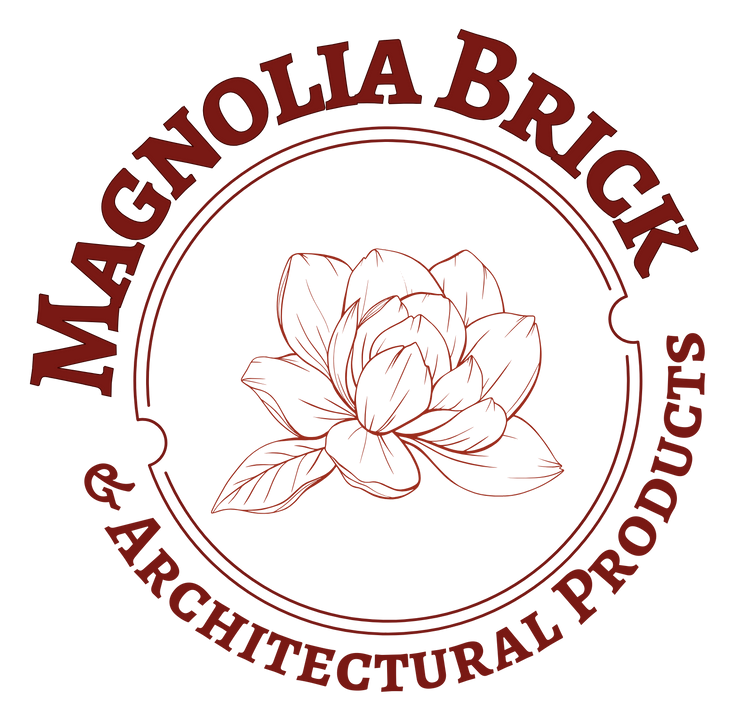The Art of Masonry: Unveiling the Craftsmanship Behind Beautiful Brickwork
The Art of Masonry: Unveiling the Craftsmanship Behind Beautiful Brickwork
In the world of construction and architecture, few crafts capture the essence of timeless beauty and enduring strength like masonry does. Masonry, the art of building structures from individual units, is a skill that has been honed over centuries. At Magnolia Brick, with locations in Tupelo, MS, and Oxford, MS, we have a profound appreciation for the craftsmanship behind beautiful brickwork. In this exploration, we'll delve into the art of masonry, uncovering the techniques, traditions, and skills that create stunning brick structures.
The Essence of Masonry
Masonry is more than just a construction technique; it's an art form that combines technical proficiency with creative expression. The craft of masonry revolves around using materials like bricks, stones, or concrete blocks to create structures that stand the test of time. What sets masonry apart is the attention to detail, precision, and the passion that artisans bring to their work.
The Role of Magnolia Brick
At Magnolia Brick, we recognize the significance of bricks in masonry and the vital role they play in creating beautiful brickwork. Our commitment to providing premium bricks in Tupelo, MS, and Oxford, MS, is deeply rooted in our understanding of the craftsmanship behind masonry. We offer a wide range of bricks, each with its unique characteristics, colors, and textures, to cater to the diverse needs of masons and builders.
The Craftsmanship Behind Beautiful Brickwork
Now, let's take a closer look at the craftsmanship that goes into creating stunning brickwork:
1. Foundation and Preparation:
The art of masonry begins with a solid foundation and meticulous preparation. The site is prepared, and the layout is carefully marked to ensure that the structure is level and plumb. Proper groundwork is essential to the structural integrity of the project.
2. Brick Selection:
Choosing the right bricks is a crucial step in creating beautiful brickwork. Different bricks offer various colors, textures, and finishes. Experienced masons select bricks that align with the design vision and requirements of the project.
3. Mortar Mix:
Mortar is the binding material that holds bricks together. The selection and preparation of mortar are critical to the strength and longevity of the brickwork. Skilled masons mix mortar to the right consistency and ensure it adheres properly to the bricks.
4. Laying the Bricks:
Masons use a range of techniques and patterns to lay bricks. Common patterns include running bond, Flemish bond, and stack bond, among others. The choice of pattern depends on factors like structural requirements and design aesthetics.
5. Precision and Alignment:
One of the hallmarks of masterful masonry is precision and alignment. Skilled masons use levels, plumb bobs, and string lines to ensure that each brick is perfectly aligned and plumb. The result is a clean and visually pleasing finish.
6. Jointing and Pointing:
The joints between bricks are an essential element of brickwork. Masons use jointers to create uniform joint sizes and shapes. Proper pointing, which involves finishing the joints, adds the final touch to the brickwork.
7. Cutting and Shaping:
Intricate designs and custom shapes often require bricks to be cut or shaped. Experienced masons use saws, chisels, and other tools to create precise cuts and shapes without compromising structural integrity.
8. Curing and Cleaning:
After the brickwork is complete, curing and cleaning are essential steps. Curing involves keeping the bricks moist for several days to ensure the proper hardening of the mortar. Cleaning removes excess mortar and maintains the appearance of the bricks.
9. Incorporating Design Elements:
Masonry often involves incorporating design elements such as arches, corbels, and decorative motifs. These elements require meticulous craftsmanship to achieve the desired aesthetic.
Masonry Traditions and Techniques
Masonry is a craft that has been passed down through generations, and it is steeped in tradition. Some of these traditions include:
1. Apprenticeship:
In many cultures, masons undergo formal apprenticeships where they learn the craft from experienced artisans. This hands-on training is essential for passing on the skills and techniques of masonry.
2. Use of Hand Tools:
Traditional masonry relies heavily on hand tools, such as trowels, hammers, and chisels. While modern technology has introduced power tools, the use of hand tools remains a fundamental aspect of masonry.
3. Cultural Significance:
Masonry has cultural significance in many regions. The techniques and styles of brickwork often reflect the cultural heritage and architectural traditions of a specific area.
4. Preservation of Historic Structures:
Masons who specialize in historic preservation play a vital role in maintaining and restoring historic brick structures. Their expertise ensures that the original craftsmanship is preserved.
The Future of Masonry
While the art of masonry is rooted in tradition, it also evolves with the times. Modern masons are embracing technology and innovative materials to enhance their craft. Sustainable practices and eco-friendly materials are becoming more prevalent in masonry, aligning with contemporary demands for environmentally conscious construction.
Conclusion
Masonry is more than just a construction technique; it's a timeless art form that marries craftsmanship with creativity. The skilled hands of masons bring bricks to life, creating structures that endure for generations. At Magnolia Brick, with our locations in Tupelo, MS, and Oxford, MS, we are proud to be a part of this tradition, providing premium bricks that serve as the canvas for masons to showcase their artistry. As we look to the future, we can be confident that the art of masonry will continue to thrive, shaping beautiful brickwork that stands as a testament to human skill and ingenuity.











